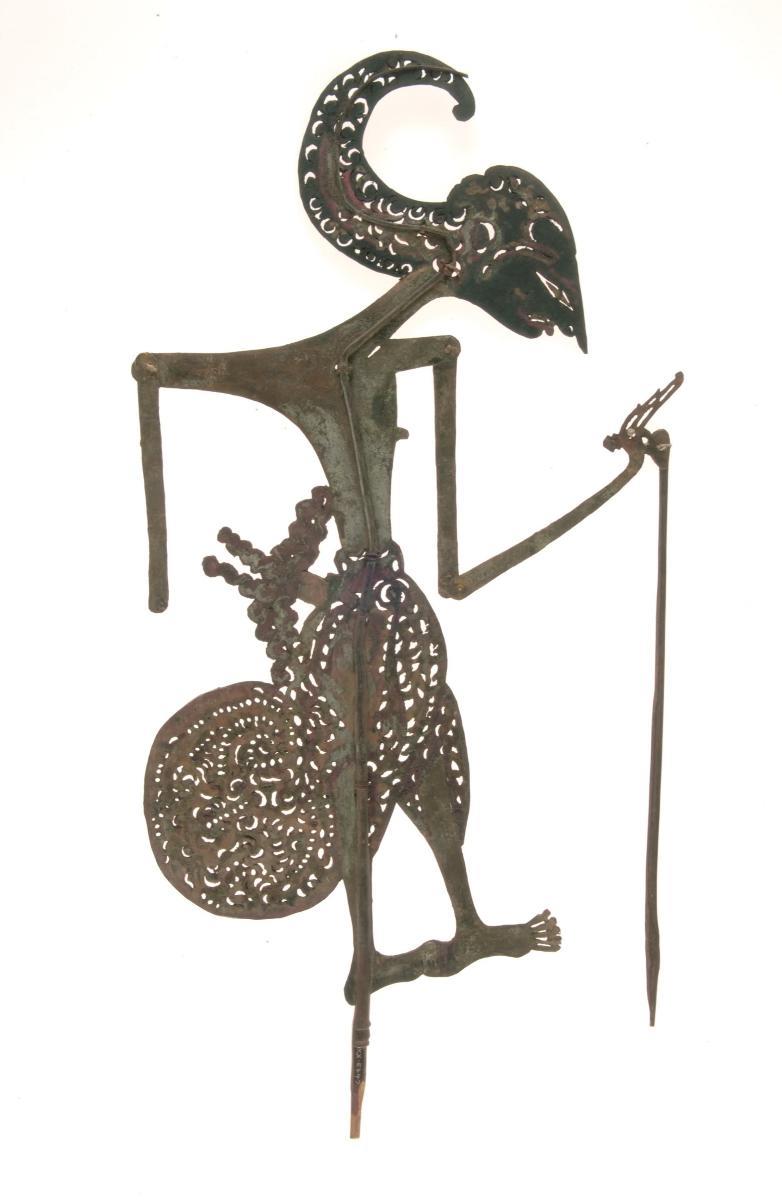This puppet represents the character of a king in the Javanese 'wayang kulit' or leather shadow puppet theatre tradition. The status of the character is indicated by the ‘makuta’ (crown) and 'praba' (winged ornament) on his back. His slim, pointed nose, downward gaze and narrow stance reflect his refined character. The Mahabharata relates the conflict and struggle between two sets of cousins, Pandawa (Pandava) and Korawa (Kaurava), over the rule of the kingdom of Astina (Hastinapura). The Pandawa brothers eventually overcome the Korawa in the Great War, the Bharatayuda. The vast majority of the 'wayang' plays performed are drawn from the two great Hindu epics, the Ramayana and the Mahabharata as well as local stories of Javanese origin. 'Wayang kulit' is considered the highest of the Javanese performing arts. Performed in the royal courts of Java as early as the ninth century, this tradition continues to be treasured as one of the 'pusaka' or sacred heirlooms of the court. 'Wayang kulit' is traditionally performed on ritual days and religious ceremonies. It has also been adapted more recently for television and public education campaigns.















